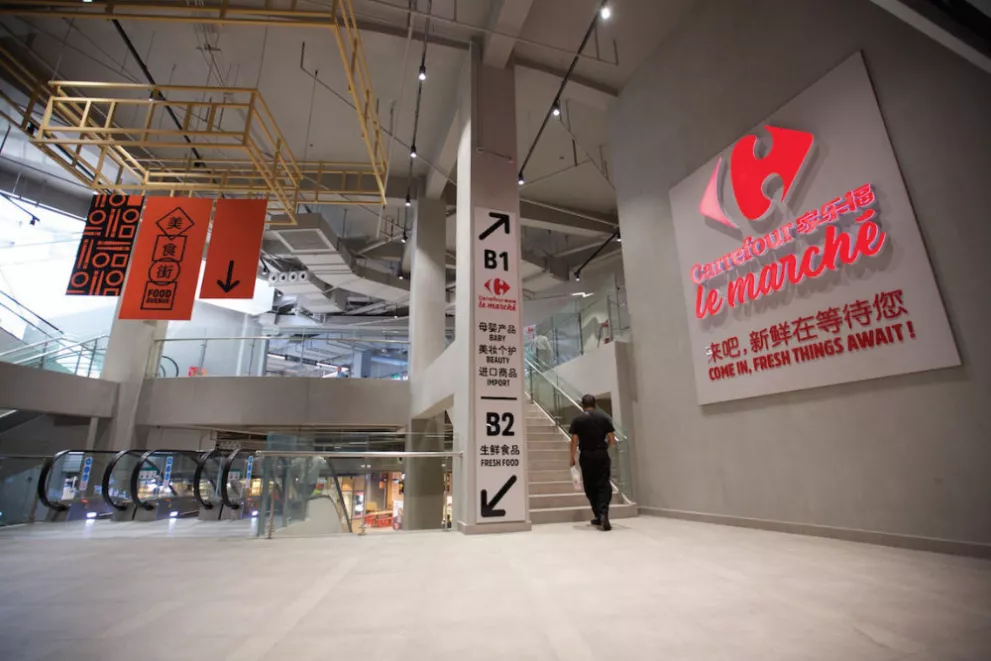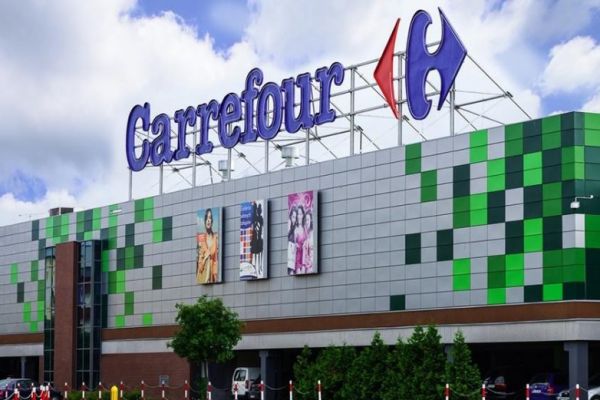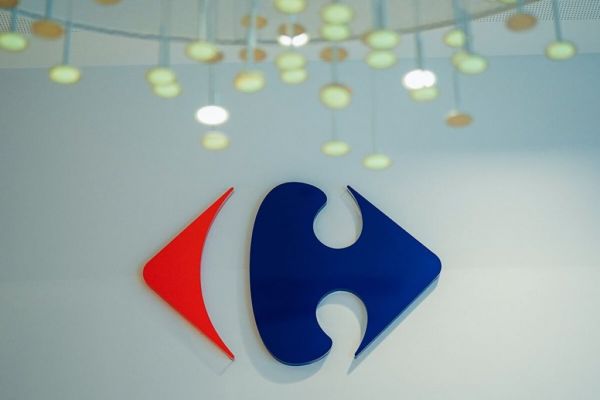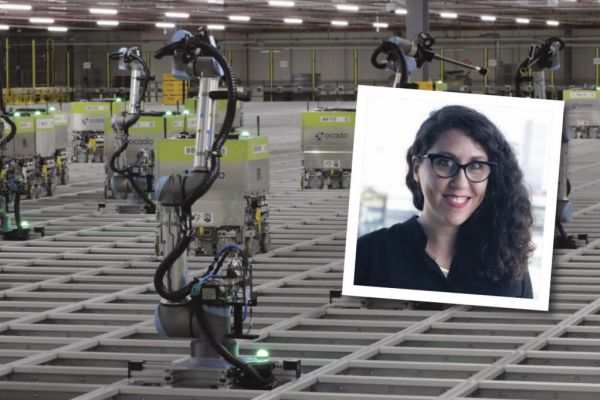In the run up to Christmas 2018, ESM is proud to present a recap of some of our biggest articles of the year, exclusively for Premium website subscribers. Earlier this year, Stephen Wynne-Jones met Carrefour China CEO Thierry Garnier to learn more about how the retailer is using China as a test bed for future retail solutions. This article first appeared in ESM Issue 4 2018.
Announcing the ambitious Carrefour 2022 transformation plan in January, Carrefour chief executive Alexandre Bompard identified the need for the group to develop an omnichannel platform that would be a benchmark-setter in modern retail.
“Our customers must find themselves in the same universe, whether they are purchasing online or in stores,” Bompard said of the group’s strategy, adding that an efficient omnichannel strategy is “the indispensable condition for success”.
Every effective strategy has to start somewhere, and for Carrefour, that place is China, where the group recently signed a strategic partnership with Tencent, home to the WeChat social network (boasting more than one billion users), as well as Yonghui, one of China’s biggest supermarket chains and a proven expert in fresh produce and convenience. ESM met the CEO of Carrefour China, Thierry Garnier, to discover the innovative concepts that could soon be making their way to the group’s core European territories.
“For Carrefour, China is a specific market that has helped us to learn and to understand the future,” Garnier explains. “It’s a laboratory for us. I think the trends we experience in retail in China will happen over time in many other countries, perhaps in a slightly different way.”
Building A Legacy
Carrefour opened its first store in China in 1995, basing its operation around hypermarkets, of which it currently operates 220 in the country. While Carrefour China is certainly a solid revenue generator, posting sales of €4.62 billion last year (around 5% of group sales), the growing cost of doing business in the country has led the group to implement a cost-reduction programme in recent years, as well as invest more in its convenience-store operation, trading under the Carrefour Easy banner, which now boasts 39 stores. Carrefour’s Asian operation, as a whole, saw sales drop by 4.4% in full-year 2017.
As Garnier attests, retail is changing, and China is ground zero in many ways. With Alibaba, JD.com and a myriad of digital players battling to build their retail presence, old-school operators like Carrefour need to keep their eye on the ball.
“Because of this growing online penetration, the retail environment in China is so different,” says Garnier. “For example, the largest bricks-and-mortar retailer in China makes around 100 billion RMB [~€13 billion]. JD.com is 10 times the size of that, and Alibaba GMV is around 50 times the size. Imagine if Amazon in the US was 50 times the size of Walmart? This is the situation we are operating in. Therefore You have to be very open to new ideas.”

Carrefour Le Marché
In May, Carrefour China opened its most state-of-the-art store to date, where Tencent’s technology has been brought to bear in dynamic fashion. The Carrefour Le Marché store is part retail experience, part inspirational space. At 4,335 square metres, it is around half the size of a regular Carrefour hypermarket, but what it lacks in space it makes up for in terms of technological prowess.
“Carrefour is a large shopping-mall operator in China, and, for us, 75% of a typical shopping-mall operation should be about experience,” says Garnier. “We want to focus on the categories that are enjoyable for customers. We need restaurants. We need cafes, tea shops, cinemas, barbers, a gym, or somewhere you can bring your children to have a one-hour lesson in English. As well as that, of course, you need very good and convenient stores.
“On the grocery side, we believe that it is very important to highlight to the customer all the new items. It’s difficult to showcase thousands of products online, but the store enables consumers to sample different things and discover new products. If we can implement technology as well, it really helps to enhance that experience.”
Chief among the innovative technologies integrated into the store is the use of facial recognition as a payment mechanism, using WeChat Pay – part of Tencent’s suite of WeChat products – which will allow customers to purchase and pay in store without using their phones or wallets. As the retailer notes, it’s simply a case of ‘smile to the camera, then payment is accomplished’. For those of us who might arrive at a supermarket checkout to realise that we have left our wallet at home, it points towards a promising future.
“We have very high targets when it comes to payment penetration with WeChat,” says Garnier. “It’s an incredible ecosystem. Across all of China, WeChat pay penetration is over 25%, while in February, 50% of our hypermarket customers paid using their mobile phones. These are incredible numbers.”
In addition, the WeChat platform also enables users to ‘scan and go’, as they make their way around the store, pay online using the same platform, and avoid queues at the checkout.

Driving Efficiency
In terms of in-store navigation, the retailer has also introduced electronic shelf-edge labelling (with prices set centrally by Carrefour), which bypasses the misleading price information caused by unclear, torn or misplaced labels. Operational efficiencies have been implemented using Tencent’s cloud-computing platforms.
The SKU count is noticeably lower in the new Carrefour Le Marché store, to ensure that the added-value elements therein have the opportunity to sing, says Garnier.
“I wouldn’t say that we have totally cut some categories, but we have certainly made great efforts to emphasise the food court counters, fresh produce, and imported products.”
Finally, for those with less time on their hands, the store offers online ordering with free delivery for orders placed within three kilometres, provided that the final basket totals more than 188 RMB (~€25).
Extending The Message
It’s not the only effort that Carrefour has made to bolster its presence in China. In 2017, the retailer embarked on its biggest marketing campaign to date, which took in traditional TV advertising, as well as a comprehensive social-media roll-out. It has also been busy expanding its e-commerce capabilities in 26 cities, including Shanghai, Beijing, Chengdu, Tianjin, Nanjing, Shenzhen, and several other large population centres.
“A large number of the technological innovations may be applied across many other countries over time,” says Garnier. “Things like the connection between the store and the online business, mobile payments, digital and social marketing – this is all part of how we operate here in China.”
© 2018 European Supermarket Magazine – your source for the latest retail news. Article by Stephen Wynne-Jones. Click subscribe to sign up to ESM: The European Supermarket Magazine.














